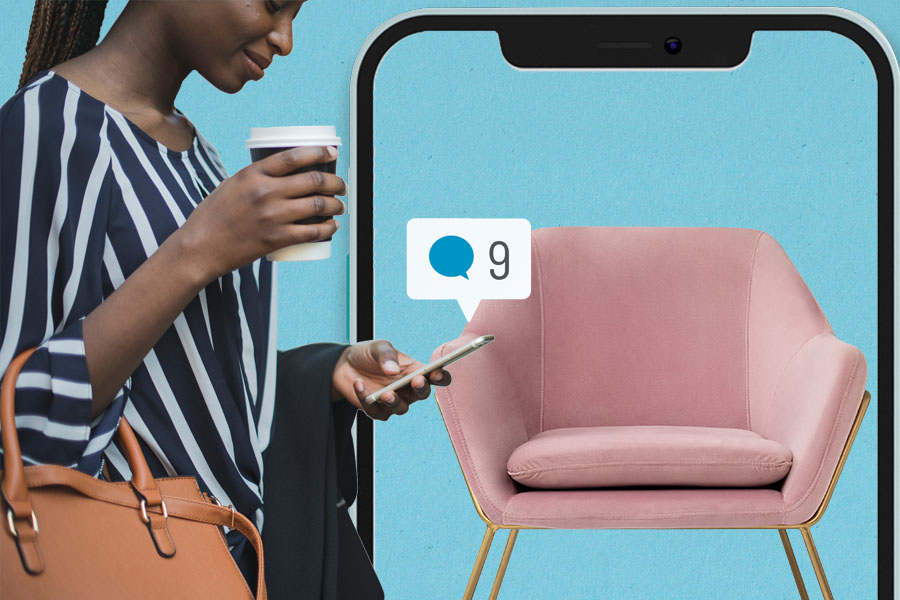Since the pandemic small brands has immensely benefited from selling online. During lockdowns customers simply had to resort to online purchases as there was no other way to buy products, helping many small independent retailers and brands survive and even thrive. With that, certain challenges presented themselves mostly related to stock management and increase in demand.
Seeing the bigger picture, while these challenges haven’t been certainly easy to deal with, in terms of demand and sales they were in most cases “good” problems to have. In the independent lifestyle market particularly, thanks to small business campaigns and initiatives, we’ve seen brands growing in both revenue and teams. Some have moved back to online selling only, leaving their physical stores behind, others have done the opposite, expanding their visibility and presence on the high street.
Looking ahead though, your business might be facing different kind of challenges. The popularity of ecommerce means that there is an increase in competition globally, customers now have more options and choices. With life returning to pre-Covid times, the demand for your products may drop.
What you might experience is your product or product category take more of a backseat in your customers’ lives. Therefore, how customers engage with your brand on your website matters more than ever before. It is absolutely crucial to understand them on much more deeper and intimate level and in return, deliver unique experiences off the website. And that is where ecommerce personalisation.
Ecommerce personalisation is about delivering unique experiences to customers as individuals based on what actions they take on your website. It’s like when you walk into a boutique and you are being guided by a personal stylist, who recommends you dresses, jackets, shoes or items based on what you like, want and desire.
In the digital world this is much harder to achieve but with technology advancements now you can do something similar. Instead of using generic recommendations and suggestions on your website, you can apply personalisation in emails, direct mail (print), SMS, on social media and targeted advertisement through behaviour-based automation in your CRM (customer relationship management).
So how does it work?
Let’s go back to the boutique scenario and the personal stylist but this time we use digital tools – your website and your CRM. Imagine a new customer lands on your website and starts browsing a certain product category (e.g. rugs, home accessories, trousers, necklaces, soaps, candles etc). While on your website, a pop up with a “first order offer” comes up on the screen and the customer puts his email address in to receive the voucher code via email.
Meanwhile, the customer clicks on various products in the category he is interested in, but then suddenly leaves. You notice that the very same customer visits your website a few times afterwards but never completes the purchasing journey. In the real world this customer would be probably browsing different stores, going from one place to another, comparing different products and brands. Eventually, with the help of a personal stylist or assistant, the customer decides to make a purchase.
There might be a similar scenario happening on your website, but you don’t have shop assistants to help the customer in their decision making. That’s where your CRM comes in. Based on the interactions taken on your website, you can send the customer an email helping him to navigate through your store. You can talk about a specific product he viewed, its design, materials, interesting facts as well as your brand values. Giving a concrete CTA (call to action) at the end, your customer can revisit that product with more clarity, confidence and trust.
Let’s now assume that you already have a good customer base and customers come onto your website on regular basis to make purchases. Instead of sending them emails about offers on products they already purchased, you can send them a storytelling email on a complementary product which you recommend specifically for them. Based on the data in your CRM, you can check the frequency of purchases each customer makes on your website, sending them relevant content at most optimal time.
Why CRM is important for small brands to deliver better customer experience?
Customer retention
Not every business is destined for success but it is in your hands to make it one. Retaining existing customers is about understanding and appreciating individual needs and desires. CRM software can help you to build more personal relationships, trust and loyalty.
Better customer service
Understanding what your customers want allows you to serve each individual better. Better service equals to customer satisfaction and increases word of mouth.
It saves you time
The ability to automate communication with customers while providing a personalised service can save you tons of time in your back office. A CRM solution can be beneficial not only to your marketing and sales team but also to your financial department.
Increases profits
CRM can be life changing when it comes to following up quotes and enquiries. It can help any potential sales from falling through the cracks as well as increasing your sales potentials through follow-ups or sending out special offers for customers’ birthdays and other occasions.
So make your CRM your best friend, everyone shops a bit differently, but knowing when customers make a purchase, view products, start a checkout or abandon the cart altogether helps to deliver a more personalised service to them.
What are good CRM tools for small brands and creatives?
Even though Mailchimp seems to be the most recommended CRM tool for small brands who are just starting out, we found that there are some limitations to delivering exceptional personalised experiences. If you have a Shopify website, Klaviyo seems to offer better personalisation options and functionality for you. For WordPress websites, if you want a more intuitive and user-friendly option, Drip and HubSpot are worth exploring further. No two businesses are the same so take your time researching the best options for you.
Inside our KNOWLEDGE SHARE membership we delve into specific ideas for communicating your brand’s message, giving you the tools, templates and processes which you can apply in your business straightaway. If you want to find out about it more, please click or tap here.










